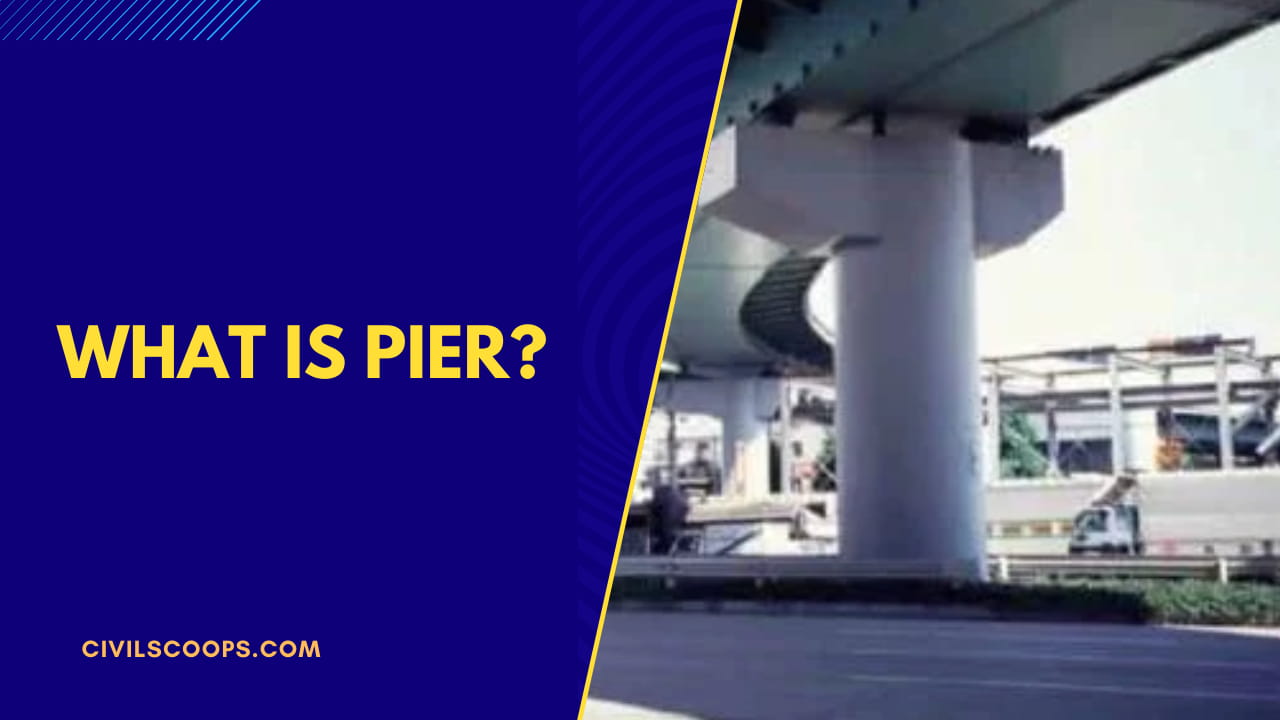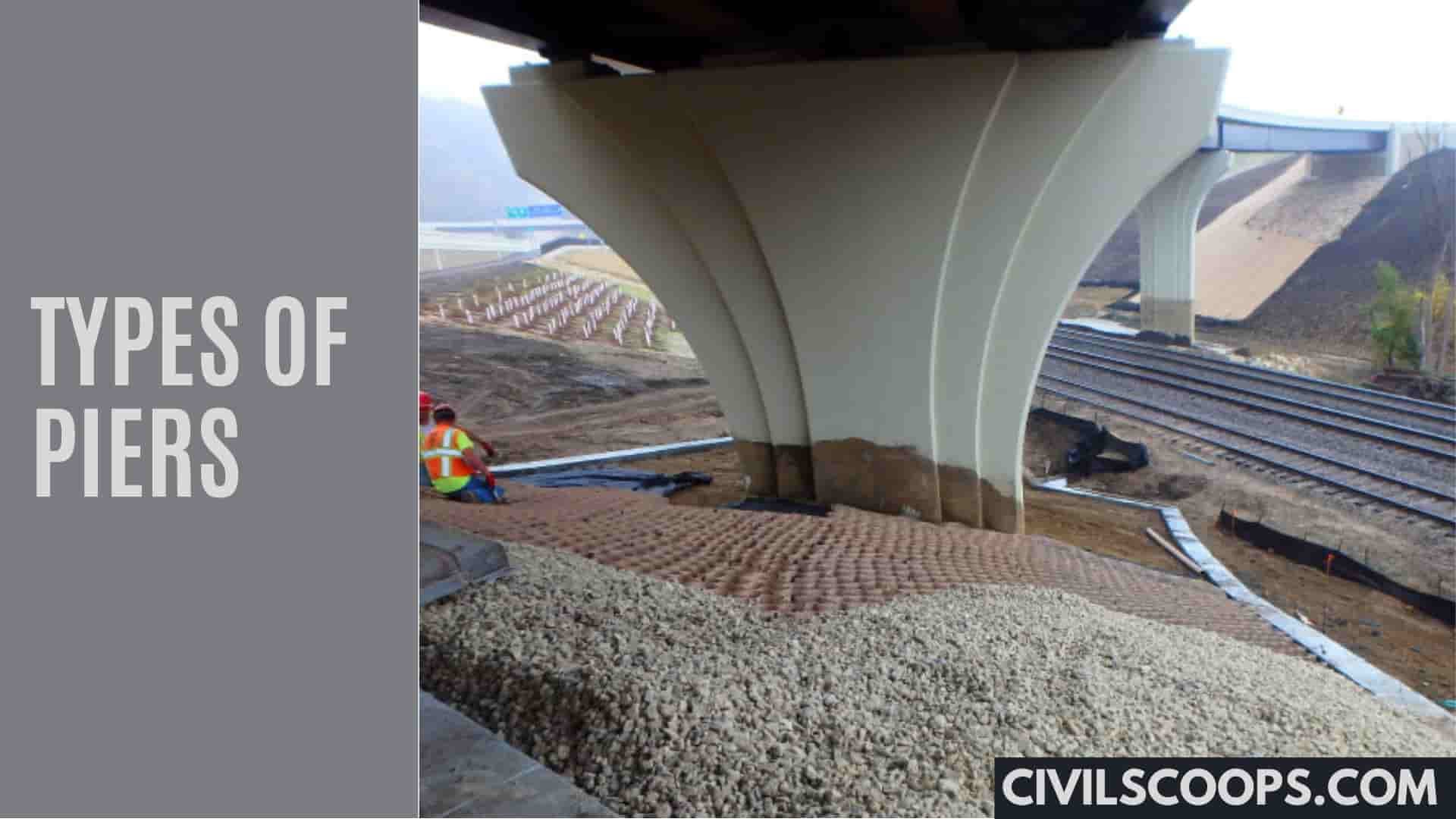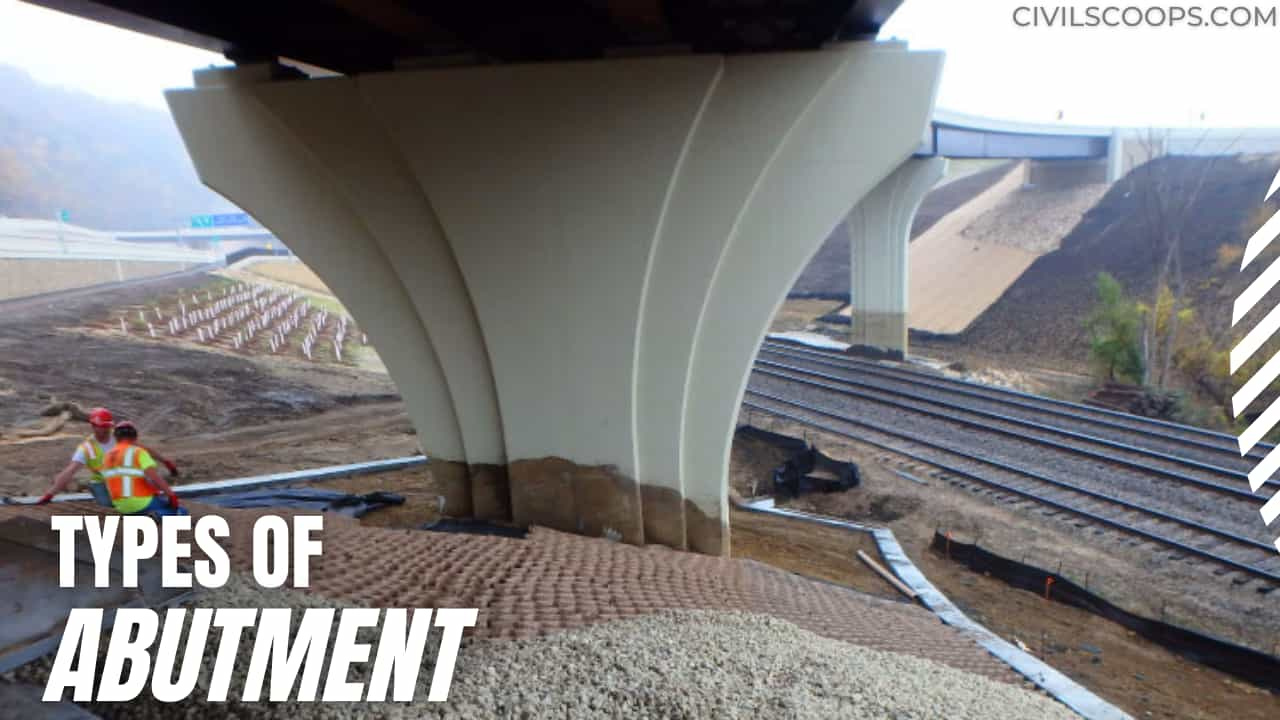Difference Between Pier and Abutment | What Is Pier | What Is Abutment

Table of Contents
What Is Pier?

These Piers provide vertical supports for spans at intermediate of different points and perform both main functions: transferring vertical superstructure loads to the foundations and resisting horizontal forces acting on this bridge.
Although piers are designed to resist vertical loads, it is becoming common to design piers to resist high lateral loads caused by seismic events. Even in some low seismic areas, designers are paying more attention to this ductility aspect of the design.
These Piers are predominantly constructed using reinforced concrete. This Steel, to a lesser degree, is also used for piers. The Steel tubes filled with concrete columns have gained more attention recently.
The piers or columns for conventional bridges, such as grade separations, overcrossing, overheads, underpasses, and simple river crossings. Reinforced concrete columns will be discussed in detail, while steel and composite columns will be briefly discussed.
Substructures for arch, suspension, segmental, cable-stayed, and movable bridges are excluded from the substructures for some of these special types of bridges.
Types of Piers

The main two types of piers are as follows.
1. Solid Piers.
- Solid Masonry Piers
- Solid Reinforced Concrete Piers
2. Open Peer.
- Cylindrical Piers
- Column Piers or Column Bent
- Pile Pier or Pile Bents
- Trestle Pier or Trestle Bent
- Masonry Piers
- Mass Concrete Piers
- Reinforced and Prestressed Concrete Piers
- Fixed Piers
- Hammerhead or Cantilevered Piers
- Special Shaped Bent
- V-Shaped Concrete Pier
What Is Abutment?

A bridge abutment is a substructure that supports one terminus of the superstructure of a bridge and, at the same time, laterally supports the embankment, which serves as an approach to the bridge.
For a river bridge, the abutment also protects the embankment from the scouring of the stream. Bridge abutments can be made of masonry plain concrete or reinforced concrete.
Types of Abutments

Here, the 5 types of abutments are as follows.
- Closed Abutment
- Stub or Perched Abutment
- Pedestal or Spill-through Abutment
- Integral End Bents
- Mechanically Stabilized Abutment
Difference Between Pier and Abutment
[su_table responsive=”yes” alternate=”no”]
| Sr.No. | Detail | Pier | Abutment |
| 1 | Support | The intermediate supports for the superstructure of a multi-span bridge are known as piers. | The end supports of a bridge superstructure are known as abutments. |
| 2 | Material | A pier essentially consists of two parts i.e. a column shaft and the foundation. | Abutments are built either with brick masonry, stone masonry, mass concrete, precast concrete blocks or RCC. |
| 3 | Function | The function of a pier is to transmit the load from the bridge to the underneath sub-soil. | Abutments support the ends of the bridge and transfer the loads from the superstructure into the ground. |
| 4 | Types | Types of Piers • Solid Piers • Open Pier |
Types of Abutments • Closed Abutment • Stub or Perched Abutment • Pedestal or Spill-through Abutment • Integral End Bents • Mechanically Stabilized Abutment |
[/su_table]
[su_box title=”FAQ” style=”default” box_color=”#333333″ title_color=”#FFFFFF” radius=”3″ class=”” id=””]
Difference Between Pier and Abutment
Pier is the internal support of the bridge. Abutments are the ends and supports of the bridge. Pier can use more than two in bridge construction. Pier is constructed between the abutments.
Types of Piers
But in all honesty, there are really only 3 basic types of piers available and used by all companies: Pressed Pilings, Drilled Piers, and Steel Piers. The small variations found in each of the 3 main types make very little difference to the overall effectiveness of the pier.
Implant Abutment Types
Implant abutments can be either stock or custom abutments, and there are two types of custom abutments: gold cast and CAD/CAM custom abutments. 15 In the past, stock and gold cast abutments were used typically but the application of CAD/CAM custom abutments has now increased in implant dentistry.
Types of Piers Foundations
There are two types of pier foundations used today, masonry or concrete piers and drilled caissons. Masonry or concrete piers – Made of concrete, these solid piers depend on the level of the stratum (load-bearing soil). If good soil is not too deep below the foundation, masonry piers are used.
Function of Piers in Bridge
The function of the piers is as follows: to transfer the superstructure vertical loads to the foundation and to resist all horizontal and transverse forces acting on the bridge. Piers are generally constructed of masonry or reinforced concrete.
[/su_box]
[su_note note_color=”#F2F2F2 ” text_color=”#333333″ radius=”3″ class=”” id=””]
Like this post? Share it with your friends!
Suggested Read –
- Core Cutter Method | What is Compaction of Soil
- What Is Plaster | Plaster Ratio | History of Plastering | Requirements of Good Plaster
- What Is Cinder Block | Cinder Block Properties | Shapes of Cinder Blocks | Advantages of Cinder
- Different Types of Washers | When to Use Washers | How to Use a Washers | Shapes of Washers
- Is Steel Stronger Than Concrete | Steel and Concrete Construction Costs | Steel Vs Concrete | How Strong Is Concrete | Concrete Vs Steel Building Cost
[/su_note]
Originally posted 2022-07-17 11:49:27.
